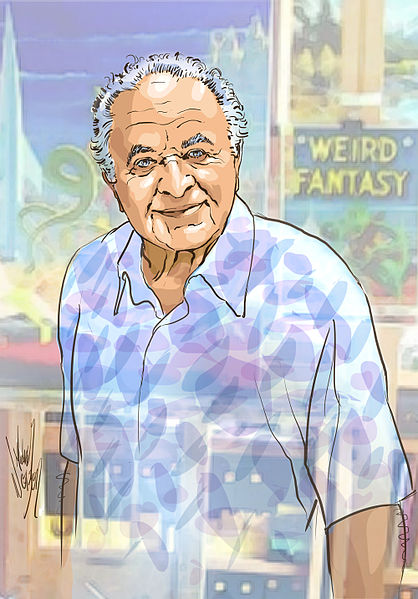Lifestyle
Al Feldstein, who headed Mad magazine for nearly 3 decades, dies at his Montana home at age 88
BILLINGS, Mon. – Al Feldstein, whose 28 years at the helm of Mad magazine transformed the satirical publication into a pop culture institution, has died. He was 88.
Feldstein died Tuesday at his home in Livingston, according to the Franzen-Davis Funeral Home and Crematory. No cause of death was released.
In 1956, publisher William M. Gaines put Feldstein in charge of the magazine, which gleefully parodied politicians and mocked traditional morality.
Feldstein and Gaines assembled a pool of artists and writers who turned out such enduring features as “Spy vs. Spy,” ”The Lighter Side of…” and ”Snappy Answers to Stupid Questions.“
Building on a character used by Mad founding editor Harvey Kurtzman, Feldstein turned the freckle-faced Alfred E. Neuman into an underground hero – a dimwitted everyman with a gap-toothed smile and the recurring stock phrase, “What, Me Worry?”
Neuman’s character was used to skewer any and all, from Santa Claus to Darth Vader, and more recently in editorial cartoonists’ parodies of President George W. Bush.
“The Portable Mad,” a compilation of magazine highlights edited by Feldstein in 1964, gives a picture of the typical Mad features that year. Among its offerings: “Some Mad Devices for Safer Smoking” (including a “nasal exhaust fan” and “disposable lung-liner tips”); “The Mad Academy Awards for Parents” (one nominee does her “And THIS is the thanks I get!” routine); “The Lighter Side of Summer Romances”; and “Mad’s Teenage Idol Promoter of the Year” (which skewers Elvis Presley and the Beatles.)
Under Gaines and Feldstein, Mad’s sales flourished, topping 2 million in the early 1970s. In a 1997 interview with the Bozeman Daily Chronicle, Feldstein credited Mad’s challenges to authority with helping incite the cultural revolution of the 1960s.
“Who’s covering up? That was one of our slogans,” he said. “We were orienting them to the adult world.”
But not everyone was amused.
Mad once held a spoof contest inviting readers to submit their names to legendary FBI Director J. Edgar Hoover for an “Official Draft Dodger Card.” Feldstein said two bureau agents soon showed up at the magazine’s offices to demand an apology for “sullying” Hoover’s reputation by using his name in Mad.
The magazine also attracted critics in Congress who questioned the magazine’s decency, and a $25 million lawsuit from songwriters who objected to their work being parodied.
By Feldstein’s retirement in 1984, Mad’s heyday was past: Circulation had dropped to less than a third of its peak.
Feldstein moved West, first to Wyoming and later Montana. From a horse and llama ranch north of Yellowstone National Park, he ran a guest house and pursued his “first love” – painting wildlife, nature scenes and fantasy art and entering local art contests.
Born in 1925, Feldstein grew up in the Flatbush section of Brooklyn. He found early success as an artist a World’s Fair contest for children and later trained at Manhattan’s High School of Music and Art and Brooklyn College.
He got his first job in comics as a teenager, drawing background foliage for “Sheena, Queen of the Jungle,” which starred a female version of Tarzan.
“Then I got a great promotion,” he told the Bozeman Daily Chronicle in a 1997 interview. “I was drawing leopard spots on her groin and breasts.”
Feldstein served a stint in the military at the end of World War II, painting murals and drawing cartoons for Army newspapers. After his discharge, he freelanced for various comics before landing at Entertainment Comics.
Feldstein’s survivors include his wife, Michelle, stepdaughter Katrina Oppelt, her husband, and two grandsons, the funeral home said.
Designed for children but loved by many adults, Entertainment Comics’ titles included Tales From the Crypt, Weird Science and Feldstein’s eventual vehicle to fame, Mad.
In 2000, a year after receiving an honorary doctorate in fine arts from Rocky Mountain College, Feldstein returned to the school to give its commencement address. He told students that while their carefree college days were ending, the “party of real life” was about to begin.
“If you’re not having fun at the party you’re at,” he told the grads, “go find another party.”






















